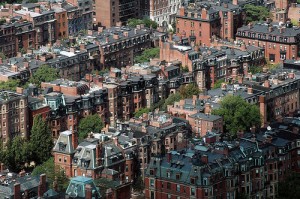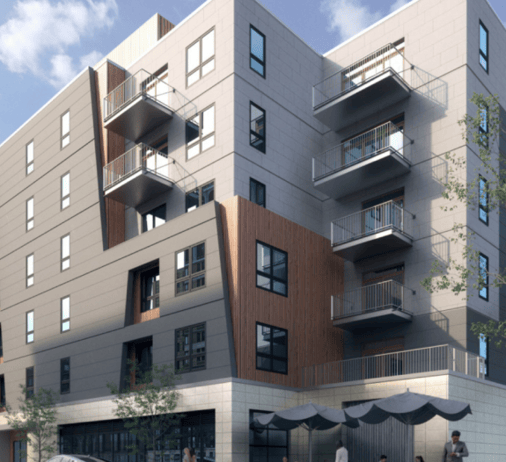What do TV’s “Swamp People” have to do with The Back Bay?
It’s time to relive your high school history class so sit back, relax, and no texting please. Teacher’s orders, ya hear me!
The Back Bay is – without question – one of the loveliest neighborhoods in the country. If you take a stroll through the Commonwealth Mall (the park splitting the middle of Commonwealth Avenue between Massachusetts Avenue and Arlington Street) you will be intoxicated with the beautiful and elegant Victorian architecture. But the Back Bay hasn’t always had it easy maintaining its beauty.
Swamp People in the Back Bay?
As much as Bostonian’s would love to give the good folks from the hit TV Series “Swamp People” a run for their money (kidding!), that opportunity has been long gone since the nineteenth century. For those who may not know, in the early 19th century the Back Bay didn’t even exist. The Back Bay was actually a swampy and unhealthy area known as the Mill Dam.
At some point in the early 19th century, the stagnant water at the foot of Beacon Hill gave off such a stench that the problem could no longer be ignored. In the 1830’s the Commonwealth of Massachusetts threatened to take the marshy land under public health laws, which in turn motivated business and city government to make a plan of action.
Quickly after discussion, nine train cars began unloading gravel every forty-five minutes into what is now Copley Square. For over 50 years these trains dumped gravel and filled an entire 580 acre area of swamp. The present day Back Bay was completed in 1882.
Lucky for us, our ancestors didn’t stop there! By 1910 they had transformed the Charles estuary into a freshwater basin – known today as the Charles River. Since then there have been many improvements, one being the very popular Esplanade on the banks of the River.
Yes, Newbury Street really used to house the “new poor people”
After many drafted plans offered from numerous architects, Arthur Gilman was ultimately chosen to be the go-to architect for the new and upcoming Back Bay. It is very obvious today that Gilman was very inspired by French architecture, and his inspiration plays a huge impact on the Back Bay to this day (and perhaps the associated home values too, maybe even your’s?). The designs of the Back Bay even became models for the design of urban homes across the country.
But hey now, let’s slow down a little. Although Back Bay was an immediate success in the 1870’s, it was very different from what it is today. In the 19th century, the saying was that each of the main drags of the Back Bay was suited to certain characterizations by who lived there (though certainly all of these people were pretty well-to-do):
- Beacon Street: The Old Rich
- Marlborough Street: The Old Poor
- Commonwealth Avenue: The New Rich
- Newbury Street: New Poor People
Click here to get updated Back Bay stats sent to you weekly.
Living on the “old rich street” in the nineteenth century
Beacon Street was known as the social, yet very snobbish street to live on. It was on the “better” or more fashionable waterside of Back Bay, which explains why it was the “old rich.” Not following me? Pretty much, they got first pick. When the new rich came along they began residing on Commonwealth. Beacon Street was very desirable in the 1870’s for similar reasons it is today. The beautiful Charles River Views to the north, and the generous sunlight on the Southern facing front of the buildings. The negatives back then were the mudflats and sewage that came with the Charles River breeze.
Majority of Back Bay homes consisted of the following:
- 4-5 stories
- Side entrance and Stairway hall
- Kitchen and pantry in basement
- First floor with higher ceilings for entertaining space (you’ve heard of “parlor level” perhaps)
- 1 or 2 floors with bedrooms (above second floor)
- Top floor for servants (for a long time the heating system could only reach lower floors)
Changes come to the Back Bay
We all know all too well how economic crisis can drive change. Similar to our recent national economic disaster, the early to middle 20th century brought financial crisis and change. When The Great Depression hit, formerly wealthy Back Bay occupants could no longer afford to maintain such grand homes and were were forced to sell. Developers came in and transformed these homes into apartments, while schools & colleges converted some of the buildings to dormitories and classrooms. This is the beginning of many Back Bay townhomes becoming smaller living spaces, especially rentals. In fact, today 66% of the housing stock in the Back Bay is made up of rental apartments.
This construction put a dent into the Victorian architecture. The process of chopping up the large Back Bay homes often would eliminate grand rooms and were replaced with bedrooms and kitchens for apartments. Plaster and wood ornamentation was torn out, staircases were taken out or enclosed, and wood paneling was taken down to the brick. The removal of elaborate French moldings, walnut and mahogany floors, plaster ceiling and wall ornament, period hard wood, and wood frame windows definitely took some character away from the neighborhood.
Another major wave of construction came once again in the 1970’s when the condo conversion era started. Apartments and some remaining single families were converted to condos, and the Back Bay started to take shape as we know it today.
The Back Bay Today
 Even though change can be destructive, it is necessary in many ways. The Back Bay has still managed to maintain its architectural character (especially after the creation of the Back Bay Architectural Commission in the 1960’s) that makes it one of the most beautiful neighborhoods in the country. The condos, apartments, and colleges that exist in the Back Bay serve more people and modern lifestyles better than the grand homes of the past could – and of course there are a few of those
grand mansions left. And lessons have been learned. Even with continual development and renovation that marks the Back Bay today, a much more sensitive approach is easy to see.
Even though change can be destructive, it is necessary in many ways. The Back Bay has still managed to maintain its architectural character (especially after the creation of the Back Bay Architectural Commission in the 1960’s) that makes it one of the most beautiful neighborhoods in the country. The condos, apartments, and colleges that exist in the Back Bay serve more people and modern lifestyles better than the grand homes of the past could – and of course there are a few of those
grand mansions left. And lessons have been learned. Even with continual development and renovation that marks the Back Bay today, a much more sensitive approach is easy to see.

